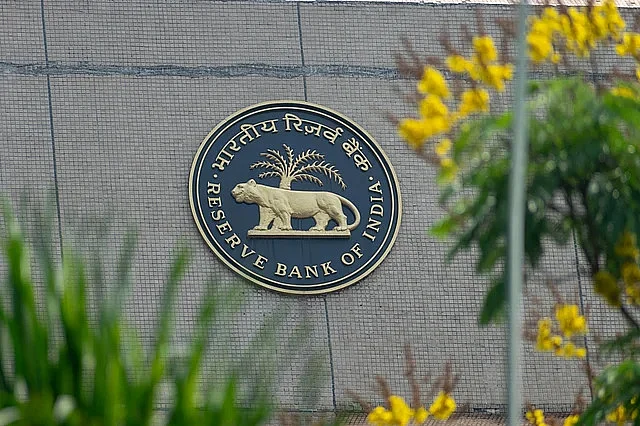The Reserve Bank of India (RBI) is set to hold its second monetary policy committee (MPC) meeting of FY26 from June 4-6, 2025. During the three-day meeting, RBI Governor Sanjay Malhotra-led MPC will deliberate on key benchmark interest rates, current inflationary pressures, and the broader economic growth outlook, besides announcing other key policy decisions. Malhotra will announce the MPC’s decision on the rate at 10 am on June 6.
Experts largely suggest that there will be a 25 basis points (bps) cut. The repo rate currently stands at 6 per cent, which, after the cut, will come down to 5.75 per cent. The anticipated move would be a continuation of the central bank’s easing cycle, following two consecutive 25 bps cuts from the earlier rate of 6.5 per cent.
Why will RBI MPC Likely Decide For a Rate Cut
Marzban Irani, chief investment officer, fixed income, LIC Mutual Fund, says the RBI is likely to go for a rate cut in the upcoming policy meeting due to a combination of factors.
He says: “Headline inflation is comfortably below 4 per cent and well within the central bank’s target; decoupling is happening between domestic bond yields and US treasury yields, and spreads between the two have narrowed.”
Irani says that with the currency being stable and geopolitical risks still present, the conditions are favourable for the RBI to ease rates.
Bajaj Broking Research too thinks that RBI will cut rates. It says, “The central bank could pursue further monetary accommodation to reinvigorate domestic growth amid a deteriorating global macro environment.”
According to the brokerage firm, the RBI is likely to take a more dovish, or rate-cut-friendly, approach due to two key reasons – low inflation and early signs of an economic slowdown. Consumer price index (CPI) has stayed below the RBI’s medium-term target of 4 per cent, and economic growth appears to be losing momentum, partly because of global challenges like recent US trade policy actions, says the brokerage.
What is RBI’s Biggest Concern Right Now — Inflation or Growth
According to Killol Pandya, Head of Fixed Income, JM Financial Asset Management, RBI appears comfortable with the inflation trajectory and it feels the inflation will remain within its tolerance limits for now. "We also know that our economic growth has been slowing over a medium term. In that context, RBI may look to focus on shoring up growth rather than managing inflation at this juncture," he said.
Irani says, “At this juncture, private capex is slow, and globally, India’s exports, both goods and services, are being impacted. Hence, domestic growth needs a push. Going forward, the monsoon is expected to be normal, which will support rural demand. However, for urban demand and consumption-led growth, rates need to be lowered. A rate cut, along with a reduction in tax rates, will also give a boost to urban growth on the domestic front.”
He adds, “In the current scenario, growth might have an upper hand. We have recently had a brief war with Pakistan. Russia–Ukraine type of geopolitical risks also exists. Further, due to tariff wars our exports might get impacted. Hence domestic growth needs a booster.”
Bajaj Broking, said in a note: “In a clear recalibration of policy stance, the MPC has now pivoted towards an accommodative posture, moving away from its earlier neutral bias. An accommodative stance signals the RBI’s willingness to inject liquidity and maintain a pro-growth orientation in the policy framework.”
Several rating agencies and global institutions have lowered their gross domestic product (GDP) growth forecasts for FY26. While the RBI maintained its growth estimate at 6.50 per cent in its April policy review, other agencies have scaled it down to between 6.00 per cent and 6.30 per cent. The International Monetary Fund (IMF) has projected that India will remain the fastest-growing major economy over the next two years. It projects India’s GDP to grow by 6.20 per cent in FY25 and 6.30 per cent in FY26.
How is Stock Market Likely to React to Rate Cut
The domestic stock market has already largely factored in a rate cut, as the MPC, in its previous meeting in April 2025, had kept an accommodative stance, suggesting that there can be a rate cut or pause, but not rate hikes in the near term.
“Markets in general, whether bond or equity are expecting rate cuts. However market will assess the forward guidance from the governor to take further course of action,” says Irani.
He added that RBI’s policy action, along with government support, could help revive private capex. “In the near term, the housing and financial sectors are likely to be the biggest beneficiaries of a lower interest rate environment,” Irani adds.
How is Bond Market Likely to React
Bond prices and interest rates have an inverse relationship. When interest rates rise, bond prices fall, and when interest rates fall, bond prices rise.
Pandya explains, "In case RBI policy does not meet broad market expectations of a rate cut, bond prices may see some correction in the near to medium term. In case the monetary policy meets expectations, the present positive trends may continue for the time being."
RBI MPC Meet: What Other Key Cues Investors Should Look For
Apart from the rate decision, a number of other factors will play a crucial role in shaping market sentiment and influencing how investors position themselves.
According to Shreya Kejriwal, equity research analyst at Moneyvesta Capital, a softer inflation outlook, strong GDP growth numbers, and proactive liquidity measures could set the stage for further rate cuts.
Inflation Outlook: Inflation is an important factor which guides the RBI’s policy decisions. Kejriwal says, “Easing commodity prices, better supply chains, and forecast of an above-normal monsoon supports a softer inflation outlook for FY26.” A downward revision in the RBI’s CPI forecast for FY26 would likely strengthen the case for rate cuts going forward.
Growth Projections: India’s economy posted a strong 7.40 per cent growth in the fourth quarter of the previous fiscal year, the highest in a year. While the RBI has pegged FY26 GDP growth at 6.50 per cent, any upward or downward revision will be closely watched for signals of economic strength or weakness, according to Kejriwal.
Liquidity Measures: The RBI recently undertook multiple Open Market Operations to manage liquidity in the financial system. Kejriwal suggests that market participants will look for continuity or expansion of such measures in the June policy, particularly to support credit flow in a rate-cut environment.
Credit Growth and Banking Sector Health: Rate cuts generally boost credit demand, benefiting sectors, such as banking, non-banking financial companies, real estate, and automobiles, as consumers take on more loans for homes, vehicles, and other needs. Corporates may also ramp up borrowing to fund business expansion and capital investments. As a result, the RBI’s outlook on credit growth and banking sector health will be crucial for equity market participants, suggests Kejriwal.















